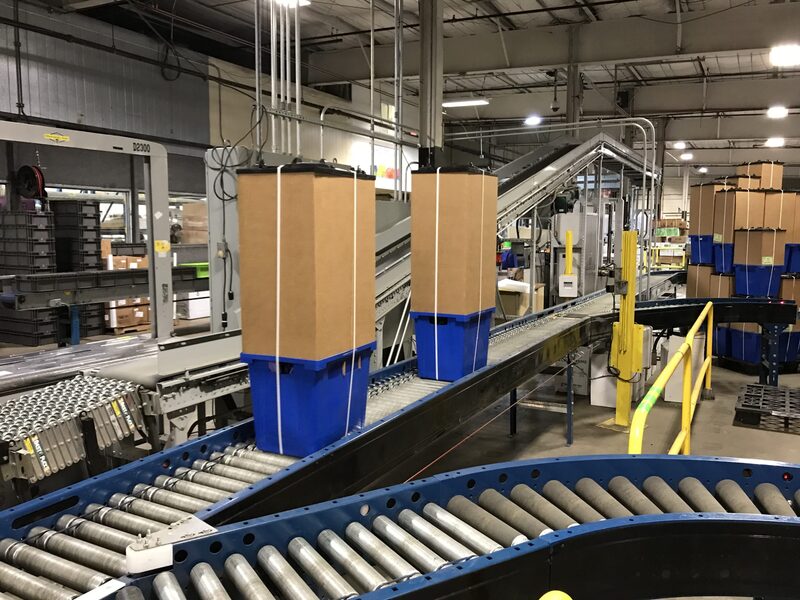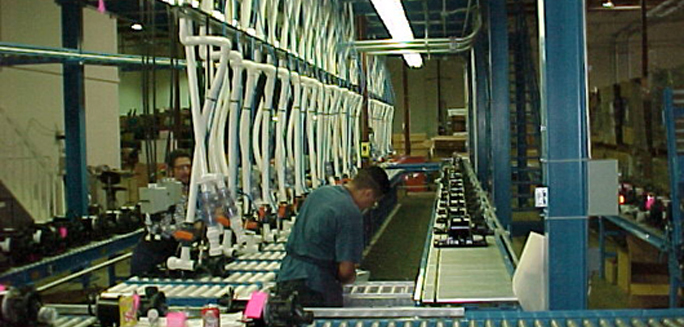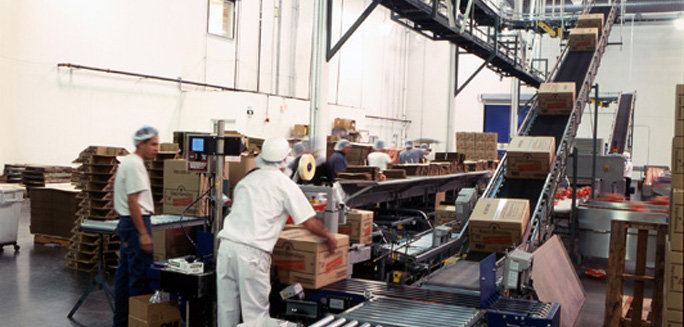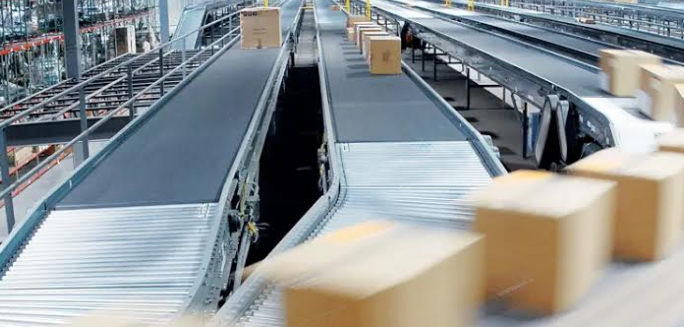Automated Conveyor Systems
Material Handling Conveyor Systems

Package and Tote Handling
Package and Tote handling conveyors are some of the most commonly applied equipment in material handling today. Available in powered and non powered, with rollers, skatewheels, and belted carrying surfaces these conveyors are integrated into material flow layouts to create efficiency in all types of industrial applications.
Accumulation conveyors use photo eyes or mechanical sensors to space apart or create “buffer capacity” between varying production processes. These buffer zones are dependent upon the type of operation (for example, loading trailers, or, feeding a tape machine) and allow for a consistent flow of goods throughout the
Parcel and Mail Handling
Parcel and Mail handling conveyors take into account the unique handling requirements for envelopes, slick parcel type packages and flat cartons.Belted conveyor systems are most commonly applied as they can provide bulk type handling. Downstream, other types of automation equipment can singulate and orient these items to permit automated sortation into bins, chutes, or to trailer loaders.

Belted systems can also be designed to create accumulation buffers to space apart, gap, and to create “buffer capacity” between varying production processes to allow a consistent flow between the origination point and the final output of a material handling system.

Manufacturing and Assembly
Food and Beverage


Cross Docking
Pallet and Drum Handling
Pallet and Drum Handling solutions require stable, powerful and reliable transportation systems. Special consideration for load orientation and equipment selection must be given due to the wide variety of available conveyors used to move, accumulate, transfer, rotate, and elevate their heavy loads often measured in tons. To cost effectively manage the investment and operation of these systems, heavy duty drag chain, roller, and even belted units for moving slipsheeted loads are carefully engineered into integrated systems to provide long lasting service.
Downlines and Chutes
Downlines and Chutes are often overlooked regarding the total value they bring to shipping operations. Engineered to absorb the full brunt of upstream fulfillment, processing and sortation volumes, they are responsible for collecting and holding packaged goods, materials and orders in a responsible non-destructive manner. From these lines, packaged goods are released and delivered directly into trailers or containers for manual loading or for being stacked onto pallets positioned nearby.
Available in a wide variety of configurations including powered decline belts, gravity rollers with airbrakes, slides, spiral chutes and other, the value engineering of this particular area is important due to the potential number of downlines needed for a particular operation.
Trailer Loading and Unloading

